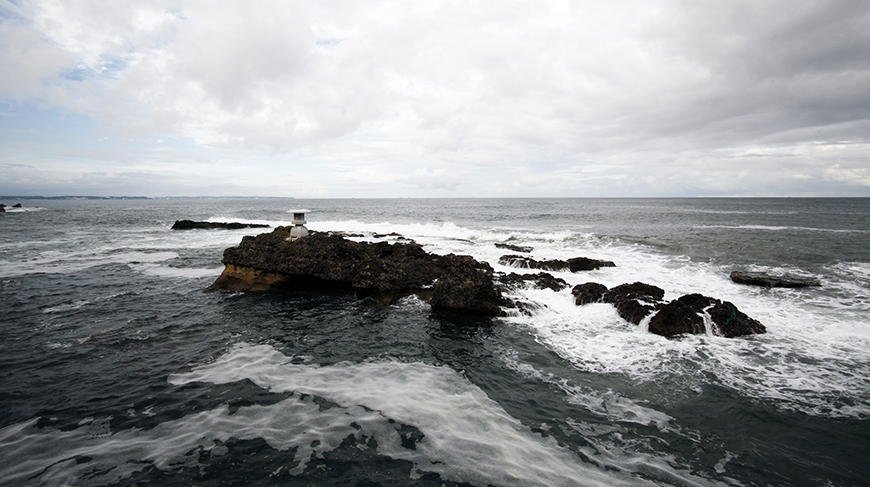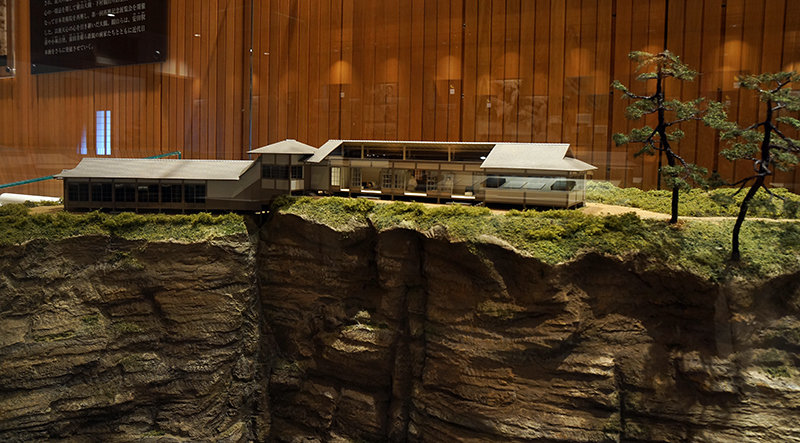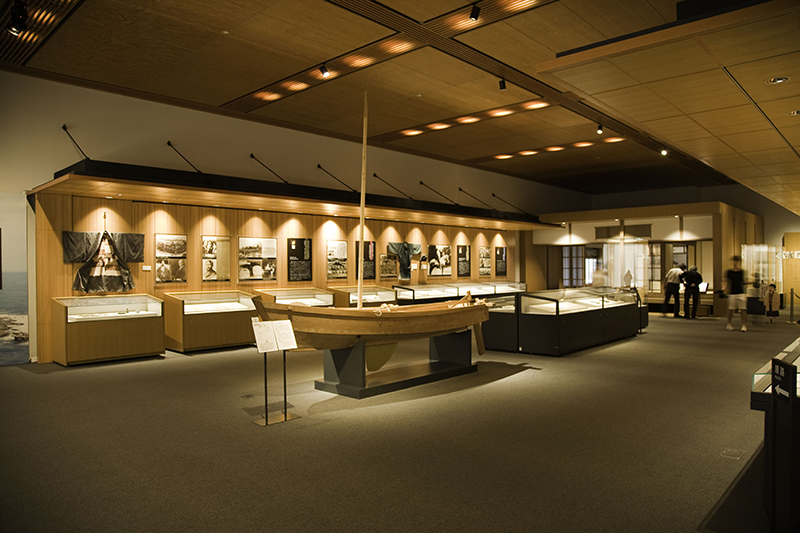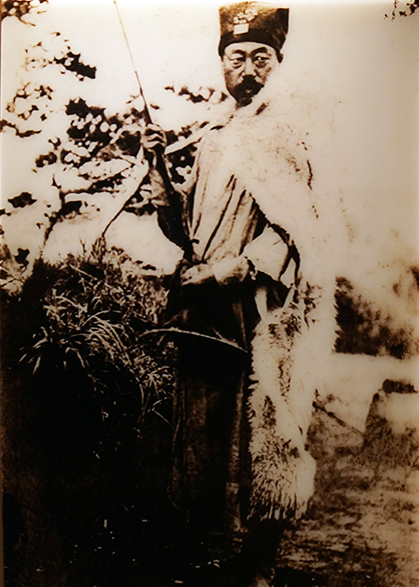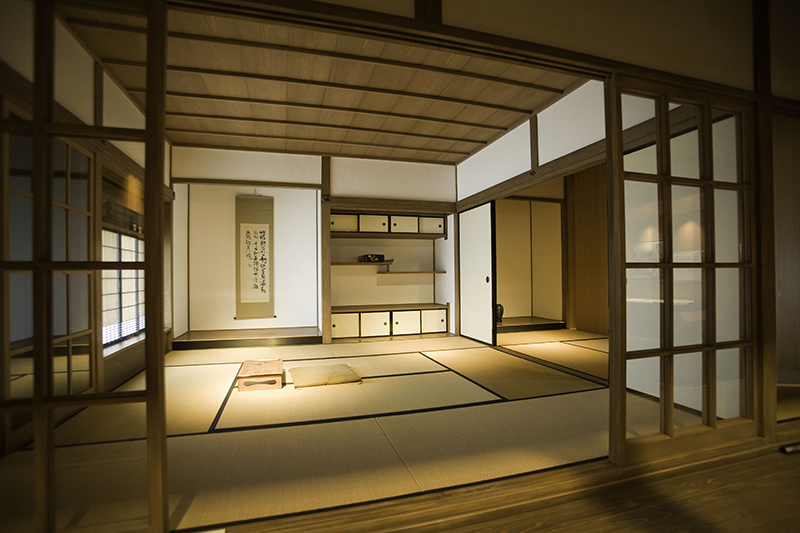Tenshin Memorial Museum of Art, Ibaraki, opened in 1997, publicly honoring artists, including Tenshin Okakura, Taikan Yokoyama and others, who were related to Izura. The seaside of Izura is selected as one of the Japan's 100 most beautiful beaches, and its sound of waves as one of the 100 soundscapes of Japan.
Tenshin Memorial Museum of Art, Ibaraki
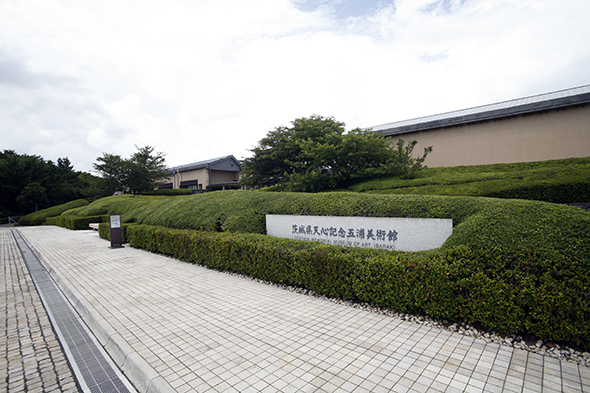
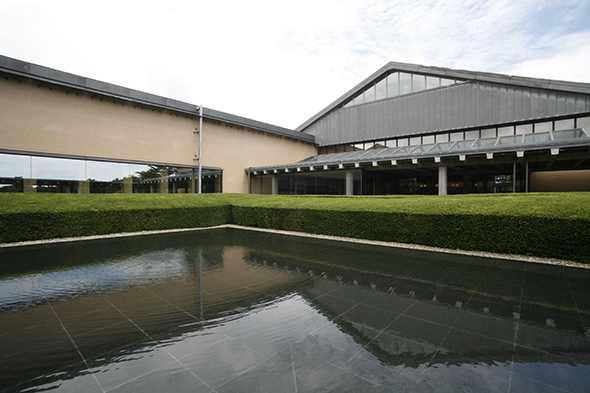
In addition to Tenshin, Tenshin Memorial Museum of Art, Ibaraki, publicly honors artists, including Taikan Yokoyama, Shunso Hishida, Kanzan Shimomura, Buzan Kimura and others who were related to Izura, and mainly exhibits Japanese-style paintings. There is also the Tenshin memorial room in the museum, and resources that indicate Tenshin's life and activities in his later years are displayed.
The former buildings of the Japan Art Institute. They were built on top of the sheer cliff at the seaside of Izura.
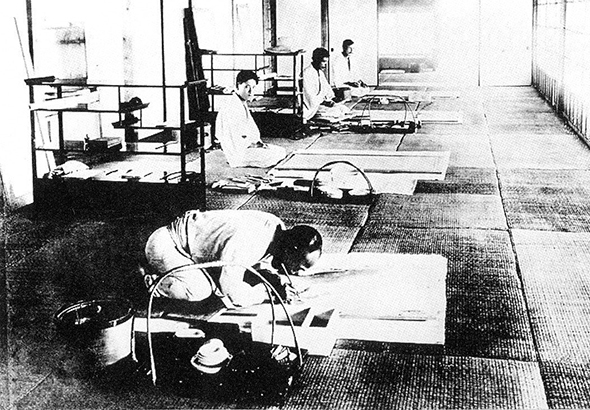
A picture of artists creating paintings at the Japan Art Institute. From the foreground: Buzan Kimura, Shunso Hishida, Taikan Yokoyama and Kanzan Shimomura. Tenshin's living room was set up in the inner part of the institute. (Courtesy of Tenshin Memorial Museum of Art, Ibaraki)

Although Tenshin settled in Izura since 1903, he stayed abroad most of the year due to his job at the Museum of Fine Arts, Boston. When the Japan Art Institute was moved to Izura in 1906, Tenshin was absent because he stayed in China. When the institute was relocated, young artists, including Taikan, Kanzan, Shunso and Buzan, also moved to Izura, and were engaged in creating art works, aiming to display their paintings at the Bunten exhibition (the art exhibition sponsored by the Ministry of Education). Yukihiko Yasuda, Shiko Imamura and others also joined the institute in the summer of the same year. Taikan, Shunso, Kanzan and Buzan exhibited "Nihyaku Toka," "Akebono-iro," "Kenju Bosatsu," "Kino aida no Aki" and "Abo Goka," respectively, at the first Bunten exhibition held in October, and their works were highly evaluated.
However, their lives in Izura were hard, and hard-pressed to get by. Shunso went to Tokyo in June 1908 in order to treat his eye disease, and Taikan also left Izura because his house was destroyed by fire. Although Taikan built a new house again in Izura in 1909, he set up another house at Ueno Ikenohata in October of the same year. Taikan and Shunso exhibited "Ryuto" and "Rakuyo," respectively, at the third Bunten exhibition held in October, and those works were highly acclaimed. However, Shunso died from a disease in September 1911. Activities of the Japan Art Institute decreased as Tenshin became the director of the Chinese and Japanese Art Department, Museum of Fine Arts, Boston, and frequently traveled abroad on business.
Kanzan and Buzan, who had still stayed in Izura, moved to Yokohama and Tokyo, respectively, in 1912. In April 1913, Tenshin took leave from his work at Museum of Fine Arts, Boston, due to his illness, and returned to Japan. However, he died on September 2 in the same year in Akakura where he had rested quietly. After Tenshin died, Taikan was not selected as an examiner for the 8th Bunten exhibition, and Kanzan also refused to be an examiner for the exhibition in 1914. They took the opportunity to reopen the Japan Art Institute at Yanaka, Taito City, on September 2, the first anniversary of Tenshin's death. On October 15 in the same year, the first exhibition of the reopened Japan Art Institute was held.
Tenshin's mementos and materials are displayed in the Tenshin memorial room. "Ryuo-maru," a boat designed by Tenshin, is restored, and placed at this side in the museum. The materials related to Tenshin reveals his achievements. Those materials were donated by Yoshisaburo Okakura, a younger brother of Tenshin, Kokichi Hayazaki who studied painting under Tenshin, went with Tenshin to China to survey its art in 1893, and became an adviser to Museum of Fine Arts, Boston, through the recommendation of Tenshin, and Chunosuke Ni-iro who was a teacher at Tokyo Fine Arts School.


When Tenshin visited Izura, he expressed its landscape in a poem titled "Izura Sokuji."
蟬雨緑霑松一邨
鷗雲白漾水乾坤
名山斯処托詩骨
滄海為誰招月魂
天心生
Chorus of cicadas, lush greenery, pine grove
Trailing clouds, white and hazy, water vapor in the air
Noted mountain, this place, represent the essence of the poem
The blue sea, for whom, invite the spirit of the moon
Tenshin Memorial Museum of Art, Ibaraki, opened in 1997, publicly honoring artists, including Tenshin Okakura, Taikan Yokoyama and others, who were related to Izura. The seaside of Izura is selected as one of the Japan's 100 most beautiful beaches, and its sound of waves as one of the 100 soundscapes of Japan.















